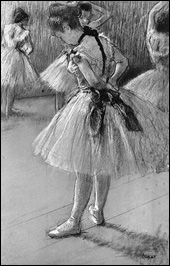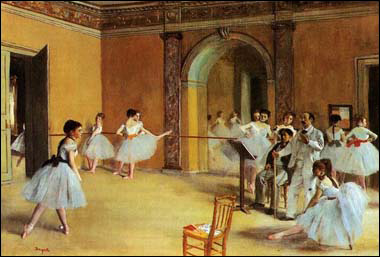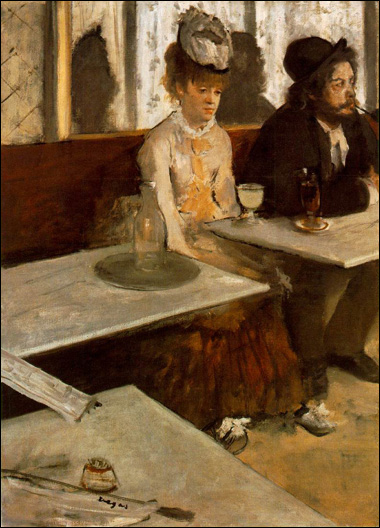 Edgar Degas was a French artist who is best known for his drawings, paintings and sculptures of ballerinas; as well as many sketches and sculptures of horses.
Edgar Degas was a French artist who is best known for his drawings, paintings and sculptures of ballerinas; as well as many sketches and sculptures of horses.
Born in 1834 to a moderately wealthy family, Degas began painting on his own before being accepted to France’s School of Fine Art at the age of 19. After being accepted, however, he studied there only briefly before moving to Italy.
He lived there for several years and learned primarily by painting copies of the Italian masters and studying classical sculpture.
After returning to Paris, Edgar Degas was quickly classified as an Impressionist even though he denied it and tended to distance himself from their ideals.
He began to look for novel ways to show the human form, especially in movement, and found that ballerinas made superb models from which to sketch and paint.
In Dance Lesson, each ballerina is caught mid-movement, and every one of them is a study in arrested motion.
Degas was a true master at creating different areas of space within his paintings, often clustering several ballerinas together in one area in order to emphasize a single dancer elsewhere.
In other paintings, like L’absinthe, Degas showed the human form in a much more subtle way.
Just the slump of the woman’s shoulders and downcast eyes tell the story—nothing else is needed. It’s a hauntingly beautiful painting and says more, in a way, than his ballerinas do.
Degas didn’t neglect the space/figure relationship within the painting, however, and used the edges of the tables to lead the viewer’s eyes straight to the woman. Additionally, he deliberately placed the dark figure right next to her, effectively keeping us from looking past her and out of the painting.
Later in life Degas began using pastels, achieving brighter, more vivid colors in his work like in Singer with a Glove, below.
Using the dramatic sweep of the singer’s hand and the impression of a long, operatic vibrato note, Degas truly conveyed the full sense of a single moment, combining movement, energy, and even sound.
Even when his eyesight became too poor to paint, Degas simply transitioned to sculptures and began creating ballerinas and horse figures by touch.
He died in 1917 at the age of 83.
This post may contain affiliate links.



